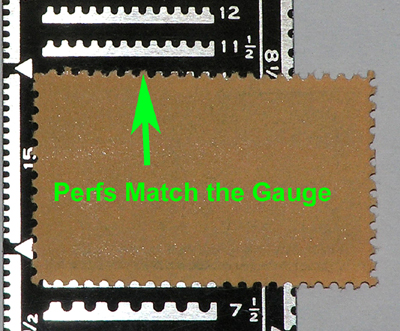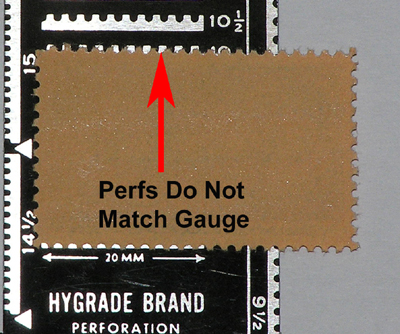How to Use a Perforation Gauge
Perforations or "perfs" in a stamp was an innovation introduced in 1854 to allow postage stamps to be easily separated and removed for use, rather than individually cutting them by hand from imperforate sheets. The standard for measuring is the number of perforations found in 2 centimeters (20 mm).
Different perforations can greatly affect the value of a stamp. A stamp with 10 holes in 2 centimeters is called a "Perf 10". Some stamps also have different horizontal and vertical perforations, called compound perfs. Compound perforations are listed first horizontally, and then vertically, for example, a stamp with Perf 11 on the top and Perf 10 on the sides would be Perf 11x10.
A stamp perforation gauge is an affordable devise that illustrates a range of perforations. The stamp is moved down the gauge until the perforations on the stamp visually match that on the gauge.
1. Line up the first perforation on the stamp with the first mark at the left of the gauge and compare how the stamp’s perforations match up with the gauge.
2. The Perforations must match up all the way along the guide. If the particular stamp has perforations that do not match the marks on the guide, slide the stamp up or down the guide until you find marks that match up

3. Helpful hint, for better contrast between the stamp and the gauge measure the perforations with the stamp face down.

